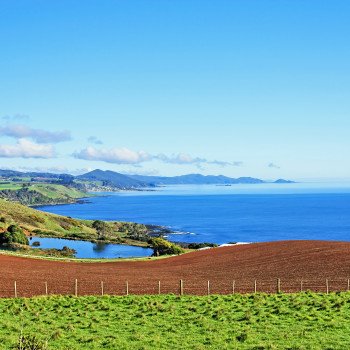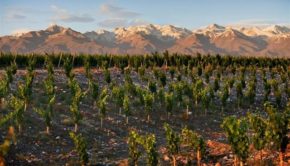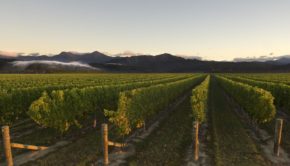ShelfLife Tasting: Tasmania on the rise

Tasmanian devils? Not quite, but Helen Coburn outlines her choice of Tasmanian picks which are devilishly good
17 June 2015
Like many of us, I’ve got relatives in Australia and in spring this year I took advantage of them in order to visit Down Under. The trip included a week in Tasmania. It’s wonderfully scenic, so that you might think yourself in Ireland. The capital, Hobart, is different, though, having a strong colonial feel. The cuisine is similar to Ireland’s but although the climate is also superficially similar, it’s a bit warmer, so they have wine. And very good it is too.
Quantities of wine in Tasmania have been rising, as growers become more skilled at selecting vineyard sites and grape clones. A few decades ago, some producers saw a great future in the planting of cabernet sauvignon. Much of it didn’t do well and with such disappointments came the realisation that pinot noir was going to be Tasmania’s strong suit among reds, with top class chardonnay travelling alongside. Already the island has over 200 wineries, with around 120 producers, but they are mostly small scale and demand now well exceeds supply. Tasmania’s regional government has recently prioritised investment in the wine industry and hopes to double the total vineyard hectarage from the current 1,500 planted. Indeed, if any reader has funds to invest in a wine venture, they are eager to hear from you!
Quality has improved markedly since I first tasted Tasmania’s offerings about 15 years ago. Gone are the stalky green flavours which used to be all too common and even in the cooler vineyards of southern Tasmania there is now noticeable consistency in the wines. Warmer climate varieties will probably only ever have limited success, but there is now fine Riesling and sauvignon blanc to set beside the increasingly sought after pinot noir and chardonnay.
During my visit, I tasted a number of Rieslings and found them to be nicely dry, with well defined flavours and moderate alcohol levels which make them very easy to drink. They’ve been compared to the Rieslings of Germany’s Mosel region but I would consider that they are just a little riper and fuller than that – more like Rheingau or Rheinhessen, perhaps.
Much depends on vintage, of course, and, as in all cool climates, there is considerable variation. The pinots noirs have surprising range, with softer summer fruit styles in the north and some very classic wines in the south which show firm tannins, redcurrant flavours and savoury notes. There’s a lot of high class sparkling wine, as you’d expect in this climate. This year has been a bit trickier than usual, with some cool weather (to which I can personally testify) toward the end of the harvest period. However, most grapes had been picked by early April. Yields look to be up on last year, with particularly fine Riesling expected.
Tasmanian producers have recently launched a new focus on export markets and their wines are now increasingly seen in the UK. This good fortune doesn’t seem to have been shared by Ireland and, in fact, when I started searching for examples here I found that several importers had discontinued labels they stocked a few years ago. Wines from Tamar Ridge, Devil’s Corner, Pirie and Piper’s Brook were all available at one point, but Tasmanian wines are a premium niche and the economic crash clearly affected demand for them here. They are now harder to find but, hopefully, our economic recovery combined with Tasmanian marketing will see some growth over the next few years.
Meantime, here are a few to try.
Pure South Pinot Noir 2013 (Marks & Spencer €18) Light berry and cherry style that works well with summer salads and buffets.
Tasmania Hill Pinot Noir 2013 (Tesco €15). Quite classy for the money, with refreshing summer fruit flavours. Keep your eyes peeled for this one, as there doesn’t seem much of it about and it’s good value.
Lot 2 Taylors Chardonnay 2013(Aldi €12.99) Crisp style, with fresh green fruits and zesty finish. Could be a little more concentrated but it’s enjoyable.
M&S Tasmanian Sauvignon Blanc 2013 (Marks & Spencer €15). Hints of lime and kiwi fruit lend a juiciness to balance out the acidity. Would be good with pork.
Ninth Island Pinot Noir 2009 (€16, some independents). One of the most popular labels in Tasmania itself, this balanced fruity pinot is carried by just a few restaurants and independents but is worth looking out for.
Eileen Hardy Pinot Noir Tasmania 2013 (Barry & Fitzwilliam €45, independents). A special treat wine with solid summer fruit, some savoury notes and lingering finish.
Eileen Hardy Chardonnay Tasmania/Yarra 2013 (Barry & Fitzwilliam €45, independents). A decent chardonnay – very decent, in fact – and my only quibble is that it doesn’t have that subtle streak of grapefruit detectable in the chardonnays I drank in Tasmania itself. It’s blended with Yarra Valley grapes for a richer style, ideal with roast white meats.
Jansz Premium Rose Sparkling nv (Corkscrew €30). Sprightly summer fruits with hints of strawberry. Would be a lovely wedding or christening sparkler. There’s also a white bubbly at the same price.
Dawson & James Chardonnay 2010/Pinot Noir 2010 (WineOnline, Liberty, independents €50-60). These are very good wines but, at these prices, there is no point pretending they are anyone’s everyday tipple. But they would make excellent gift wines for an enthusiast eager to try new styles.



 Print
Print




Fans 0
Followers